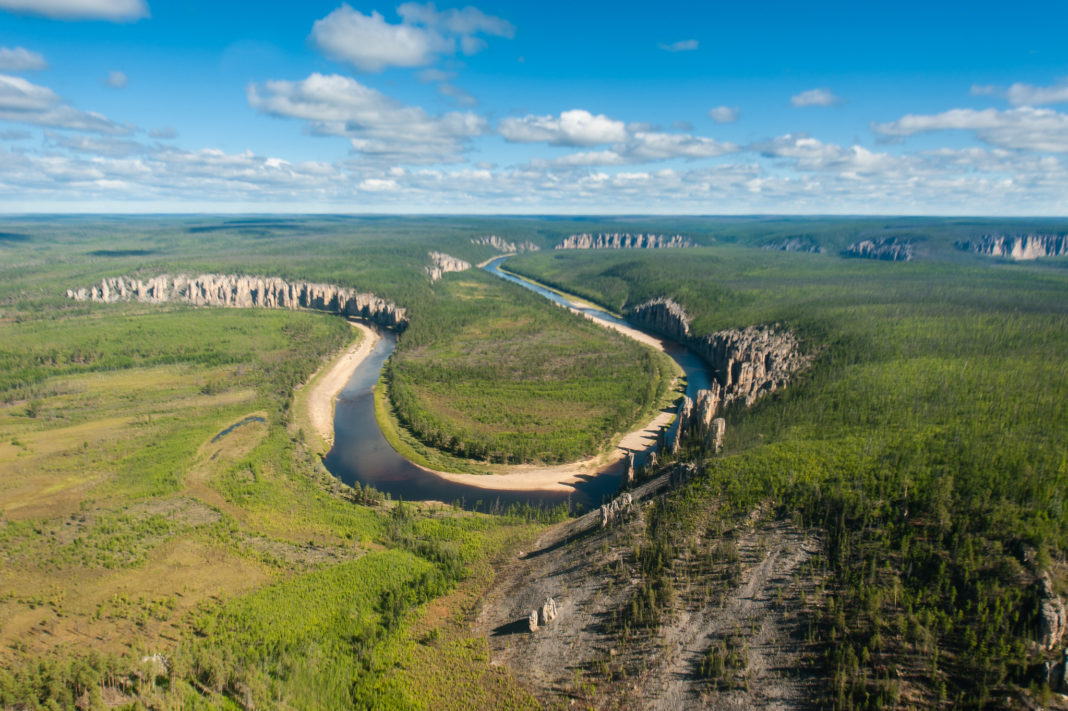Lena’s Pillars, also called Lena’s Stone Forest, is a natural rock formation about 60 km upriver from Yakutsk, in Russia. The amazing stone structure towers over 150 meters in height and extends along the river for about 80km.
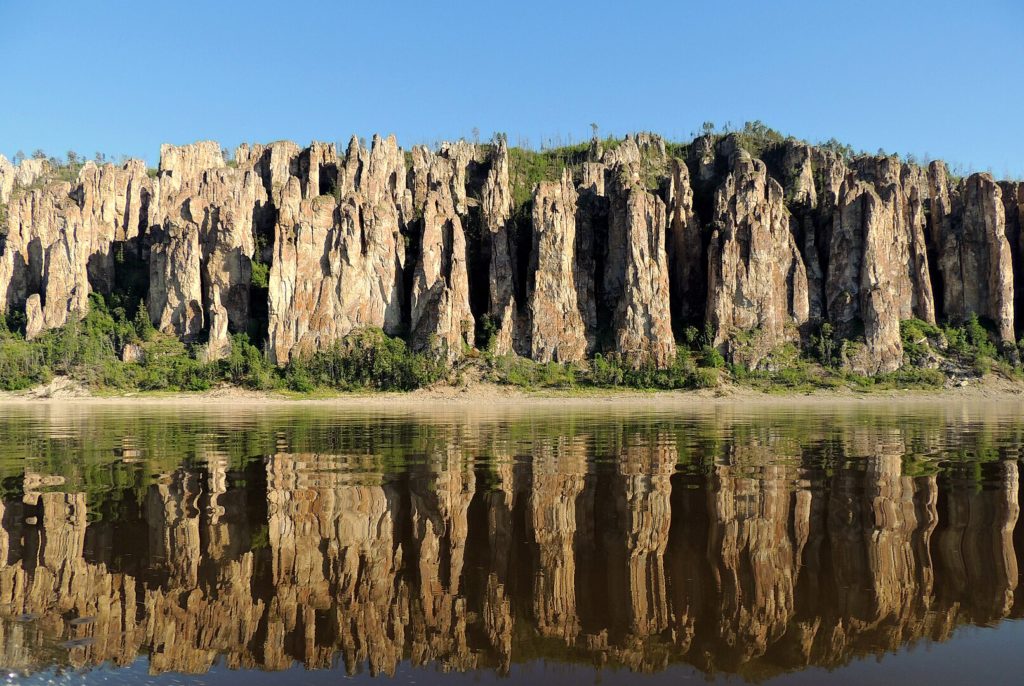
The pillars are 150–300 meters high and were formed in some of the Cambrian period sea basins. The highest density of pillars is reached between the villages of Petrovskoye and Tit-Ary.
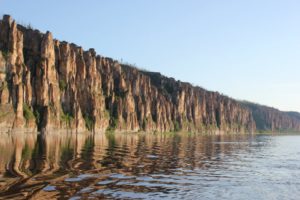
The pillars consist of alternating layers of limestone, marlstone, dolomite, and slate of early to middle Cambrian age, which are weathered, producing the rugged outcrops.
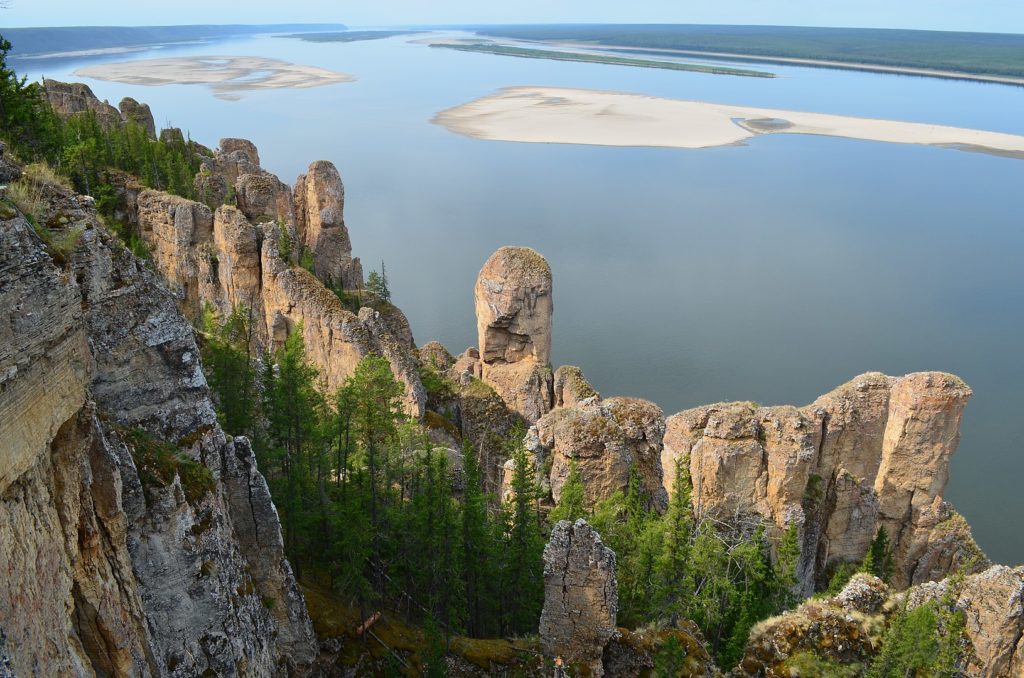
These types of rocks are commonly formed in marine environments and the horizontal layering and vertical variation indicate marine transgression/regression; with the slate representing the deep marine, slightly metamorphosed shales.
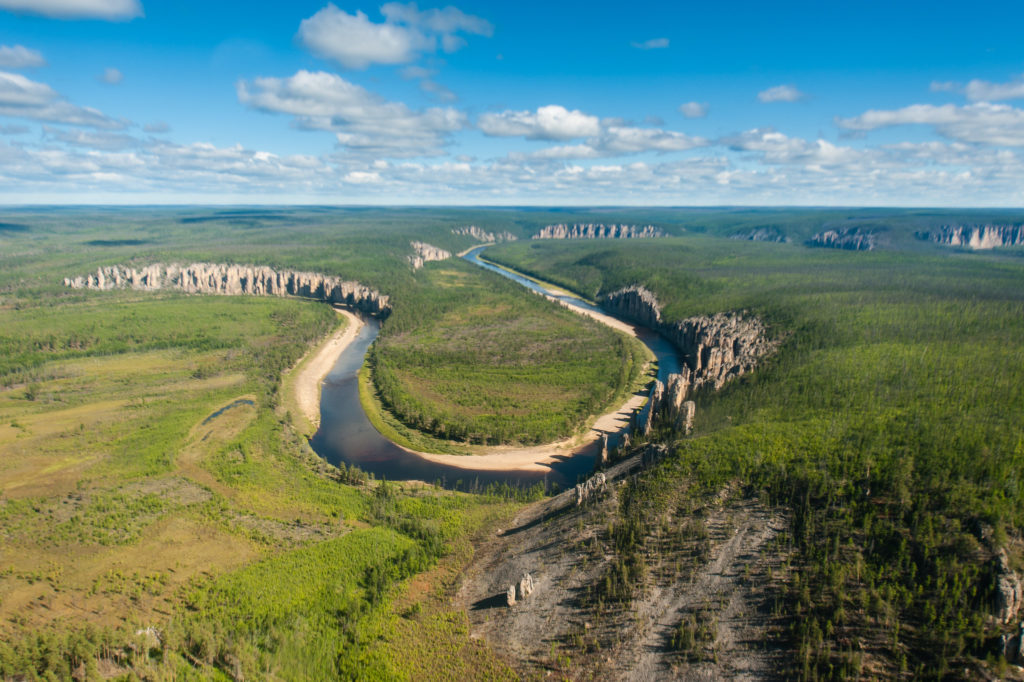
Although Lena Pillars Nature Park is famous for its rocky formations, it is also home to numerous unique fossils of primitive fauna, such as mammoth, bison, reindeer, and wooly rhinoceros. Ancient organisms like mollusks, shells, sponges, and trilobites, dating back to the Cambrian Explosion were also found beautifully preserved.
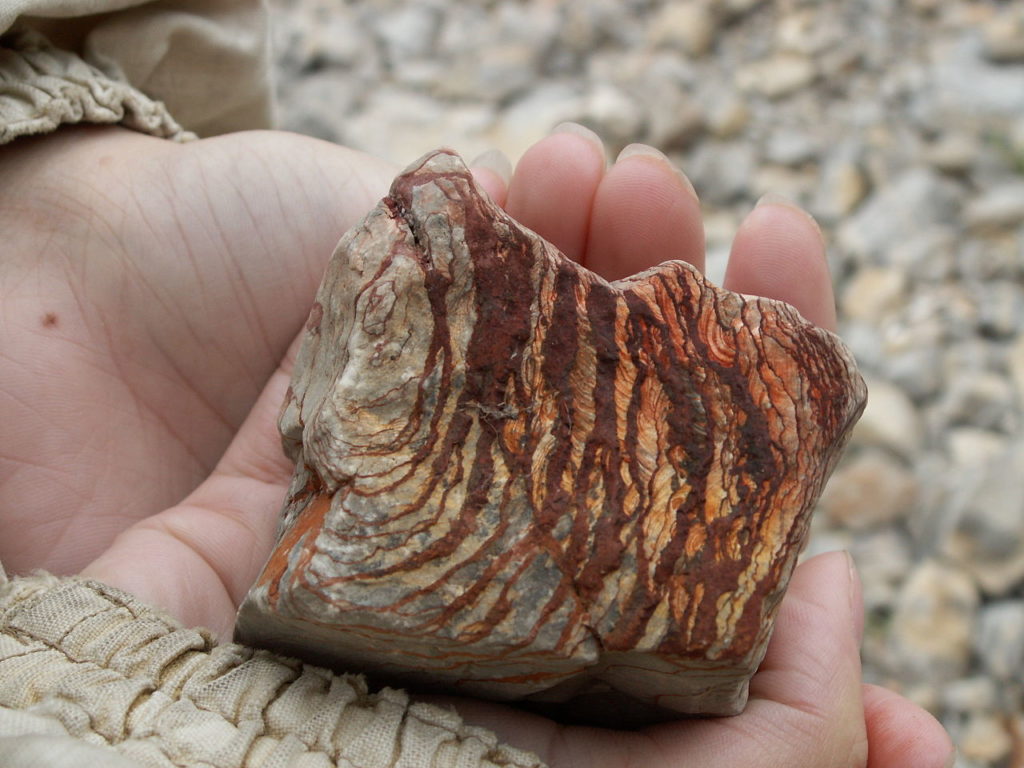
Lena Pillars contains outstanding evidence of the Earth and its living population development history. Numerous fossils of ancient organisms found here are unique preserved pieces of evidence of a very important stage in the history of the organic world and a biodiversity “boom” that occurred in the lower Cambrian epoch. The Lena Pillars Nature Park was inscribed on the World Heritage List in 2012.





